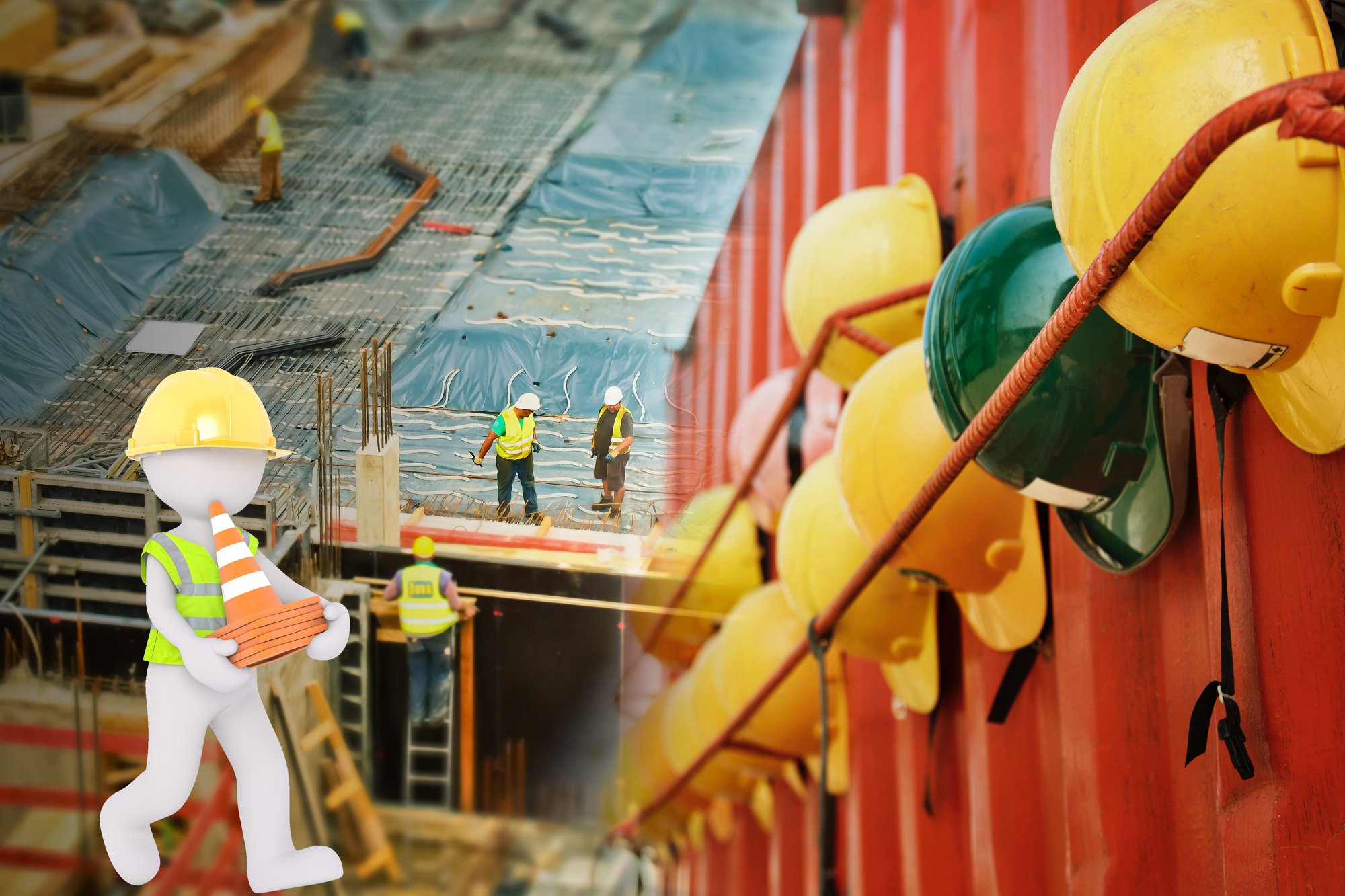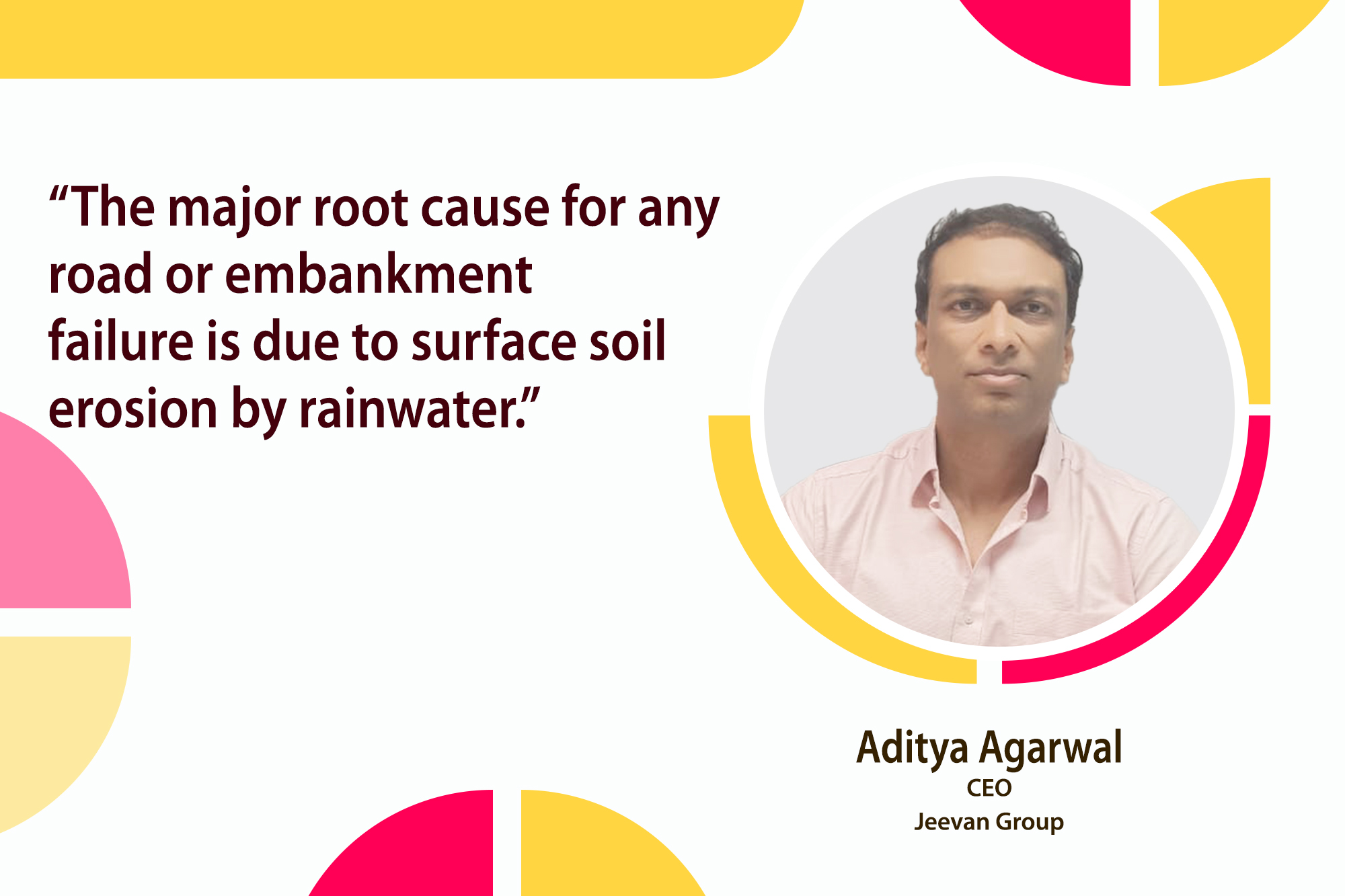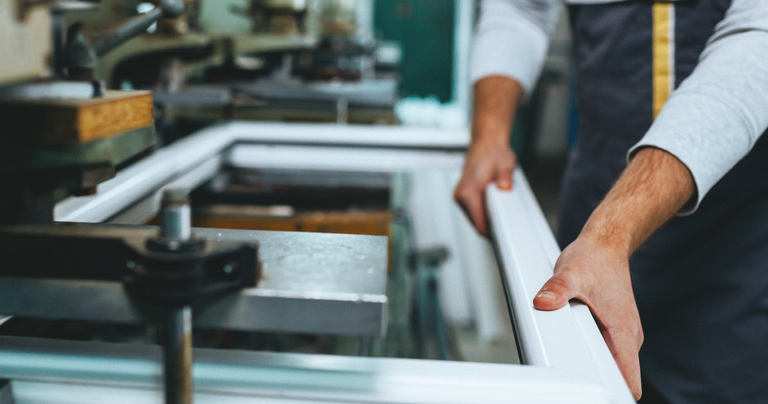Regular training and inspections keep jobsites threat-free
By Edit Team | March 14, 2019 7:04 am SHARE

Ensuring hazard-free equipment and workplace entails regular inspections at the jobsite.
Safety is not merely crucial but a non-negotiable requisite of every construction. Workers at construction sites need to be alert and follow every detail of instructions laid down in the safety manual as well as on the goods for construction drawings, which are followed for construction activities. There is a need to ensure that safety and health are not compromised, and best value is provided while keeping the cost at the lowers. Safety measures must be considered and planned during the design stage itself. The site must display safety signs and warning notices at all times.
Contractors must ensure regular training to all the employees or workers on safety measures, provide safe work equipment and periodically inspect and maintain all such equipment. The contractor must plan emergency routes for exit, clearly identify danger areas; prepare loading bays and ramps, etc. The workers must be provided with personal protective equipment, reflective clothing which should be fit and comfortable to the respective worker, says Niraj Bhatia, Head – Strategy, Contracts and Procurement, M/s. Viiking Buildinfra Pvt Ltd.
The contractor and client’s team should conduct regular training to let workers know how to protect themselves against hazards. They must conduct regular job site safety inspections to check all the equipment and workplaces are free from hazards. They must ensure regular housekeeping in all areas whereby the site is always clear from hazards for workers.
Employees must follow all safety rules, check safety equipment before starting work, replace damaged tools, and stop work if physically unfit for the same. They must help report unsafe work practice to their immediate superior to avoid any accidents.
Safety of workers helps to improve morale and keeps construction projects on schedule and under budget, says Ratan Lal Kashyap, Sr. Vice President – (Procurement), G R Infraprojects Ltd.
The following safety measures help keeping threats on job sites at bay.
Planning ahead: Extensive planning should be done way before the actual work begins to identify the best plan for potential safety hazards. Project managers and field representatives should put preventative measures in place and communicate them to workers, in addition to providing the appropriate safety tools and equipment.
Adequate safety training programs: Safety training, safety awareness programs annual training calendars should be fixed before commencement of any sites and ensuring participation of people working in various sites.
Proper use of personal protective equipment (PPE): PPE according to on-site working conditions are always ensured before the jobs starts. Safety manual is also integral part of the company which gives a guideline for the entire worksite considering work methodologies.
Safety as a culture: Education is a way to ensure safety programs are successful. Most of the highway works are on urban areas where traffic volumes are high, a proper route diversion with barication of work area should be adequately planned.
Process safety management (PSM) plays an essential role in preventing structural collapse, fires, explosions and incidents with petroleum products, dangerous chemicals, toxic releases and releases to the environment. PSM is a blend of both management and engineering skills used to prevent, control and mitigate the potential effects of high consequence events. Utilising effective process safety management to ensure risks and any potential consequences are minimised, is critical, says Pankaj Udeshi, Asst. General Manager Procurement, Supreme Infrastructure India Ltd.
Promoting safety at construction site
Daily meetings: Employees need to be briefed about the different safety measures when it comes to each specific jobsite. As a project continues to progress, the hazards also change. It is up to project managers and team leaders to ensure that everyone on the jobsite is provided with proper instruction, and is aware of the changing regulations.
Reduce the amount of night work: Late work hours and dark environments create a greater potential for accidents. If possible, minimise the amount of night work, or limit it to a low-risk area of the jobsite. Some of the reasons why accidents increase at night include fatigue, as people are less alert after midnight, as well as reduced visibility.
Proper safety gear: Construction sites are notorious for unpredictable accidents and unforeseen safety hazards. To prepare workers, proper protection is needed at all times. Some basic safety precautions include hardhats, eye protection, hearing protection and harnesses. Slip-resistant boots, heavy duty gloves and masks are also standard safety apparel that must be worn on all jobsites.
Reflective or highly-visible clothing: These are a must in order to reduce vehicle-related accidents. High reflective fabric should be used by all employees, and at all times. Through simply being seen by drivers and equipment operators, workers are kept out of harm’s way, which can reduce the potential of getting hit.
Clear signage to warn of danger: Wires and high voltage areas should be marked and the electricity should be deactivated when it is not in use. Areas should be cordoned off by pylons and ropes – to prevent people accidentally moving into areas where there are chances of falling debris or other dangerous hazards.
Awareness: Every site must have a strong supervisor who is willing and capable of enforcing safety standards with no exceptions. It is the construction manager’s job to make sure that every worker is aware of the dangers that come with working on a construction site and they must protect workers from these dangers. Every single person that steps foot onto a construction site should be aware of the risks associated with the job and how to prevent them with their knowledge of construction site safety.
Training: without the proper training, construction workers can be easily injured or even killed. In such an environment where injuries and fatalities are highly likely, training is necessary and will prevent things like workplace injuries that will hurt you ethically and economically. Experienced workers should be expected to refresh their knowledge of standard safety by attending regular training sessions throughout the year. These training sessions can go over simple things such as fall protection and proper use of ladders, but the goal is to make sure everyone is adequately trained.
Communications: accidents are more likely to occur when workers are unsure what to expect. Direct discussion of the day’s goals and activities will cut down on surprises that could cause bodily harm. Informing the staff and making sure everyone is doing their job is a proper way to communicate and make sure they understand construction site safety. Make it clear that it is everyone’s responsibility to follow rules, procedures, and best practices to prevent accidents on the job site.
Freely environment: Always encourage employees to speak up when they see something going wrong; this can significantly help to avoid incidents, injuries, and fatalities. To increase chances of participation, ensure workers feel comfortable to ask questions and raise safety concerns without fear of retaliation or bullying. This will make it easier and quicker to address issues head on to prevent them down the road. Trust and quality of relationships heavily influence the safety and overall productivity of workers.
Documentation: to enforce construction site safety, one have to make sure to have proper documentation of everything that is going to be done on-site with site contractor and supervisors like license of any work, ESIC, PF, insurance documents of workers etc.
Proper equipments: all equipments and machines must be suited to the task and well maintained. Without the proper equipment, one can’t have construction site safety because there will always be an opportunity to get injured using the wrong equipment.
Make sure to supply the right tools for the right tasks, and double check that workers understand how to properly operate the equipment they’ll be using. Eliminate hazardous distractions and obstructions by reinforcing consistent housekeeping practices on the job site.
Innovation: the development of new practices that will enhance security should always be encouraged, and companies should avoid speaking against legislation aimed at improving safety protocols. Perhaps with enough innovation, all construction sites can maximize their construction site safety practices and can be 100 per cent accident-free.
Growth in technologies: the growth of digitisation in construction now makes it possible to make real-time decisions remotely. Unmanned aerial vehicles (UAVs), known as drones, are already in use in the industry and provide a convenient way to conduct site inspections, observations, and safety audits.
Ensure safe manual handling: workers who need to manual handling, lifting, lowering, pushing, pilling, and carrying need to be adequately trained. The demand of lifting and pushing heavy or awkward size objects involve the risk of musculoskeletal disorder and repetitive strain injuries. Avoid above things by taking lifting aid like forklift truck, electric or hand powered hoist.
Protect from dust/exhaust fumes: at construction site many task generate significant amounts of dust, workers are at risk of serious ill health. So ensure that the work place is properly ventilated and respiratory protective equipment is used.
Personal protective equipment (PPE)
All construction workers should be provided with the proper personal protective equipment (PPE) and clothing such as a helmet has to be supplied and worn at all times at the construction site, safety glasses must be provided to protect workers against debris in the air, safety or high-visibility vests must be provided and worn to keep workers visible, protective gloves should be supplied and worn to protect against cuts, proper clothing is a must for worker protection both indoors and outdoors and anti-slip footwear is also necessary.
Use clear signage – Visible signage helps workers remember and understand safety protocols that need to be followed at all times. There should be clear signage for site amenities as well as first aid and emergency fire equipment.
First aid – Kits and equipment must be placed in an easily accessible area on site.
Perimeter – secure the site perimeter with proper fencing as a first line of defense, and maintain a clear zone adjacent to fencing.
CCTV surveillance systems can be used to aid the security of a site and can act as a deterrent to criminal activity. “CCTVs not only help in maintaining the security of the complex but also aid in the supervision work for clients, says R.Nandakumar, Founder & CMO, Active Total Security Systems-ATSS.
Quality of work, safety track-record
One of the most important ingredients for a safe construction site is a strong team of work supervisors trained to identify hazards and empowered to implement safe working methods. While labour attrition is very high, the supervisor’s tenures are relatively stable. Organisations should include contractual supervisors in their extended safety teams. There should be a plan to develop such supervisors through constant training and motivation allowing them to be a crucial link in the safety chain, says Lalita Teckchandani, General Manager – Training, Education and Consultancy at KARAM Industries.
There is a need to move beyond the current L1 culture and select contractors based on their quality of work and safety track-record, adds Teckchandani.
Real estate sector across India is experiencing a surge in demand for electronic security systems due to rising security concerns and enhanced security awareness. Hence, need for enhanced site security measures like video surveillance, biometrics, access control, under vehicle surveillance system (UVSS), intrusion alarm system, etc. has gained prominence more than ever.
“More deployments of advanced IP and HD video surveillance cameras, access control, biometric time and attendance, intrusion alarm systems are visible due to increasing threats. Structured and systematic approach can secure the unorganised construction sector in a phased manner,” says Ashish P. Dhakan, MD & CEO, Prama Hikvision India Pvt Ltd.
“New breed of IP & HD cameras and NVRs are available to secure the construction sites and multisite monitoring is possible from a centralised location,” he adds. VSaaS services are also offered by the security service providers for centralised remote monitoring of construction sites.
For certain areas where construction material is being used in the middle of the forest area, the video surveillance solution provide can use long-range thermal camera to monitor and differentiate between humans and other animals. Also, there is Visitor Management System to monitor the entry of visitors maintaining a record of the same in the system and online and remote viewing of sites.
Contractors must ensure regular training to all workers on safety measures, provide safe work equipment periodically inspecting and maintaining the same.
Niraj Bhatia, Head – Strategy, Contracts and Procurement, M/s. Viiking Buildinfra Pvt Ltd
Safety of workers helps boost morale keeping construction projects on schedule and under budget.
Ratan Lal Kashyap, Sr. Vice President – (Procurement), G R Infraprojects Ltd
New breed of IP & HD cameras and NVRs are available, and multisite monitoring is possible from a centralised location.
Ashish P. Dhakan, MD & CEO, Prama Hikvision India Pvt Ltd
Process safety management is used to prevent, control and mitigate the potential effects of high consequence events.
Pankaj Udeshi, Asst. General Manager Procurement, Supreme Infrastructure India Ltd.
CCTVs are one the most significant security gadgets employed across all types of commercial and residential properties.
R.Nandakumar, Founder & CMO, Active Total Security Systems-ATSS
Safe construction site requires strong team of work supervisors trained to identify hazards and empowered to implement safe working methods.
Lalita Teckchandani, General Manager – Training, Education and Consultancy at KARAM Industries
Cookie Consent
We use cookies to personalize your experience. By continuing to visit this website you agree to our Terms & Conditions, Privacy Policy and Cookie Policy.




































-20240213125207.png)

























